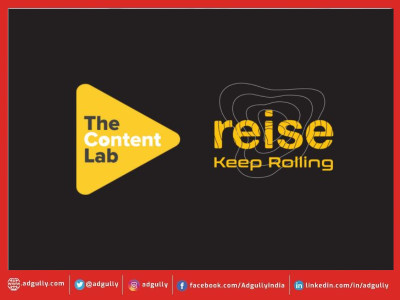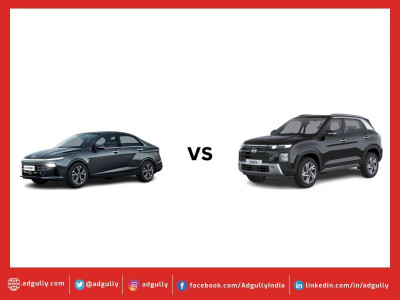AgVoice | Today's Neanderthal-style marketing destroys value: Razorfish's Karg
Given the rapid and fundamental shift in consumer behavior, the pace of technological change, and the vast availability of consumer data most of today’s interruption-based, mass-media advertising techniques can best be described as ‘Neanderthal-style’. This marketing model is fundamentally broken. It is wasteful, increasingly irrelevant, ignores new realities, and dates back to a time that is about to come to an end. As a consequence, marketers and their agencies are putting the very survival of their brands at risk.
Numerous studies suggest that over 100B US$ in advertising spent is wasted annually. The global display advertising industry alone is expected to waste around 11B US$ in 2014 alone. Despite that marketers globally are hesitant to change their current model.
To understand what is happening it is worthwhile going back in time. In the history of human commerce mass-media advertising is a fairly recent phenomenon; dating back to the 50s. It had its place and time when channel choices where small, availability of media inventory limited, audiences’ captive as well as receptive, and trust in brands and authorities relatively high. Since then things have moved on. Over the course of the last decade, many marketers got caught off-guard and are having a hard time adjusting to new realities. Today, customers can instantly find and verify almost any piece of information from anywhere, at any time. For example, if a consumer wants to find out what the most fuel-efficient 5-door vehicle is – aside from asking friends and family – she will likely use a search engine early on in the process. Hence, the need to create mass awareness via traditional advertising (e.g., TV, Radio, Print, etc.) needs to be re-thought. In addition, mass audience reach outside of prime time events (such as the Super Bowl, World Cup, Olympic Games, National Elections, etc.) is becoming a thing of the past. As a result, publishers around the world are greatly struggling with declining subscriber numbers. For example, between 2010 and 2013 5M people ended their cable and broadband subscriptions in the US; and since 2007 over 200 notable newspapers have become defunct in the US alone.
At the same time, the true value and success of social media platforms often seems misunderstood. Advertising executives look at them for reach and frequency first and foremost. This is fundamentally wrong. A mistake which led to a decline in Facebook’s user base, a course correction of their strategy, and ultimately the 19B US$ purchase of WhatsApp – in a move to secure Facebook’s longer-term survival. In essence, social media platforms allow the fulfillment of fairly basic human needs (e.g., expression, recognition, instant gratification) at scale, 24/7, globally, in real-time. Social platforms put friends and family recommendations – the number one influencer of purchase decisions – ‘on steroids’; which is well demonstrated with the rapid growth of WhatsApp’s or WeChat’s user base. For any product or service to succeed in this environment it must truly and uniquely fulfill a customer need. This requires a fundamental shift in today’s marketing model – brands need to go back to providing what consumers really want, not what their brands like to offer. It sounds simple but the mass-advertising model has made many marketers be overly confident and rely too heavily on their ability to influence consumer needs versus serving them.
In this context, brands like Google, Facebook, Netflix, or Twitter have been built in a very different way compared to brands like Kellogg’s, Pepsi, Gillette or Nestle. However, it is not just technology brands that embrace a new model. Red Bull goes to market very differently then Coca Cola; the former owns every single consumer interaction end-to-end (e.g., Red Bull F1 racing) while the later still spends billions of dollars on traditional advertising and sponsorship. And firms like Uber, WhatsApp or WeChat have reached global scale with no traditional advertising; simply via referrals based on a consumer insight and an enormously well executed service model. In fact, they go even further. None of them allow any interruption-based advertising on their platforms. Instead, they are laser-focused on delivering value to their customers and in return taking the world by storm.
How to spot ‘Neanderthal-style Marketing':
• Going to market without a differentiated product/service that addresses a real customer need
• A limited or no test and learn agenda
• Lack of personalized experiences
• Any type of consumer interruption (especially on social media)
• A believe that pretty pictures or a little film will compensate for a true product benefit
• Over-reliance on paid media
• A focus on influencing versus enabling the customer
• Believing that an increase in social media followers or likes represents success per se
• Thinking that advertising and marketing are one and the same
‘Neanderthal-style marketing’ is everywhere. It occurs not just in traditional channels - banner ads or video advertising pre-runs - are digital examples of the same practice. While they are often highly targeted they still represent an obsolete model. The misleading assumption is that these techniques are evolving - from 1.0 Neanderthal-style to 2.0. They bad news is that while waste and the level of annoyance are reduced it still ignores new realities; and hence will ultimately fail; especially in a mobile-first world.
What is relevant for post Neanderthal-style Marketing? In a nutshell, going back to basics:
• The functions of product/service innovation and marketing need to work closely together
• Putting the consumer experience at the core; and designing a service model around it
• Providing true value to customers
• Going back to the basic insights around consumer behavior (e.g., behavior changes before attitudes)
• Owning the consumer experience including the underlying data
• People love a great, well told story
Most executives - both inside marketing and advertising firms as well as on the client side - don’t seem under any particular pressure to evolve. Surprisingly, many still completely misjudge how profoundly new technologies and consumer behavior changes are impacting each and every value chain. To some extend the slow response of CMOs and CTOs is understandable. Past success combined with inertia is holding them back; and CEOs and Boards are not setting the right incentives. As long as CMOs are primarily rewarded for driving reach and frequency (instead of revenues) and way too far removed from the departments that drive product and service innovation nothing will truly change. In today’s reality it is not about wasting advertising dollars any more; what seems to be overlooked is that marketers risk the very survival of their brands.
The big question is, will Neanderthal-style Marketing be absorbed by a new model or become extinct? Only time will tell. Should you spot signs of Neanderthal-Marketing in your organization we strongly recommend implementing change fast. Just ask the likes of Kodak, Blockbuster, HMV, BlackBerry, or Barnes & Noble.
About the Author:
The writer, Michael Karg, International Chief Executive Officer, Razorfish began his career in the year 2000, with Digitas in Boston, and in 2004 took on responsibility for the 100+ strong Strategy & Analysis teams in Boston and Detroit, leading large-scale assignments for clients including AT&T, Bayer, Ericsson, General Motors, Microsoft and SAP. When Digitas was bought by the Publicis Groupe in 2007, he moved to London to serve global clients including General Motors and Samsung, and continued on to co-lead Digitas’ London operation with an emphasis on re-igniting its strategic and creative direction.
In 2010, the Publicis Groupe purchased Razorfish and Karg became the Chief Operating Officer - International, with responsibility for all offices and markets outside the US, and in 2011 added additional responsibilities as President EMEA. In May 2013 following the integration of DigitasLBi, he was elevated to the position of CEO International, Razorfish.
Experience across multiple continents and an extensive academic career have contributed many insights and learnings to Karg’s role. As well as overseeing key multinational client relationships, with a focus on orchestrating Razorfish’s international network capabilities, which enables them to deliver breakthrough, award-winning work for clients across geographies is what he believes to be as top priority.
















Share
Facebook
YouTube
Tweet
Twitter
LinkedIn